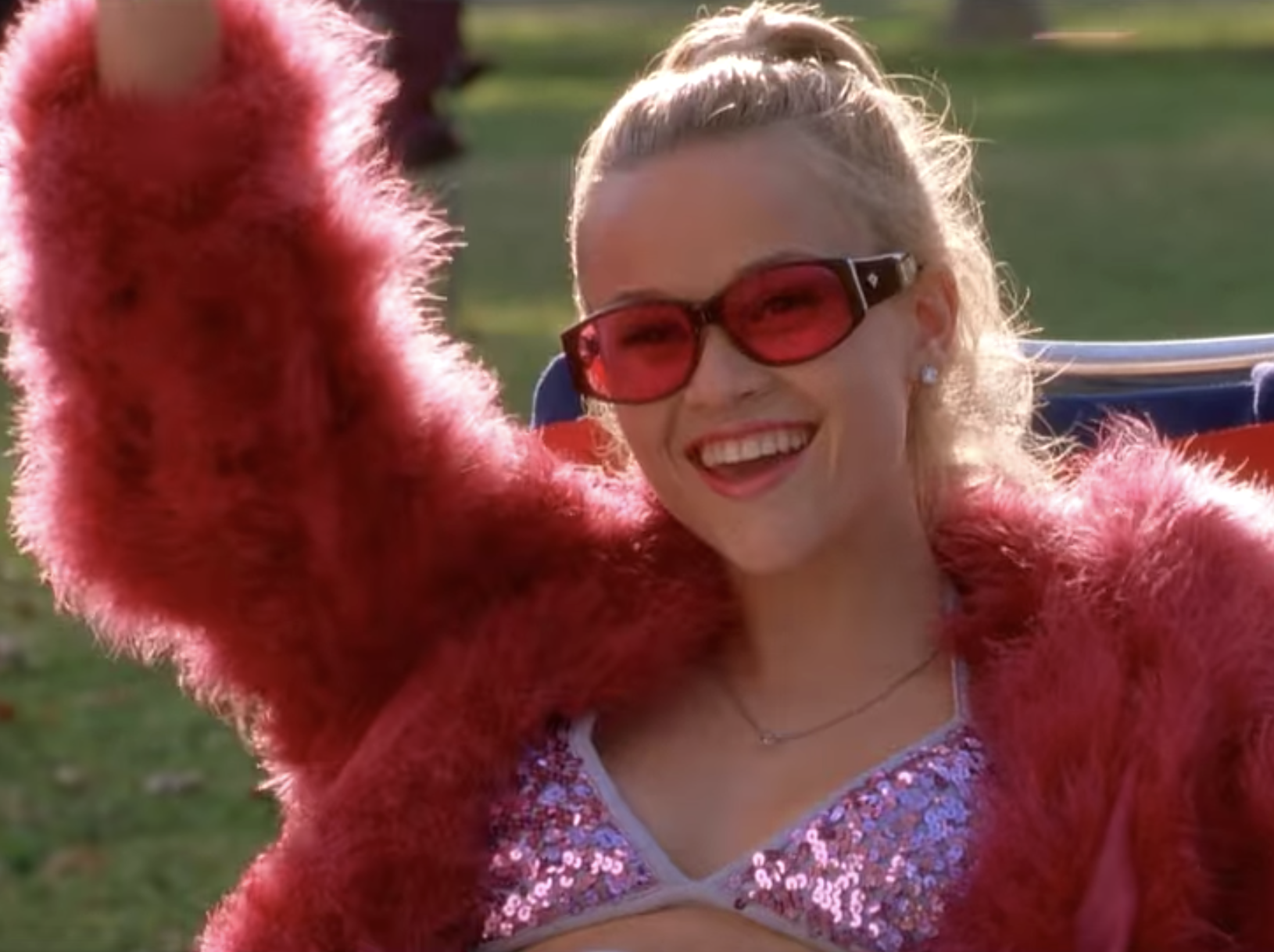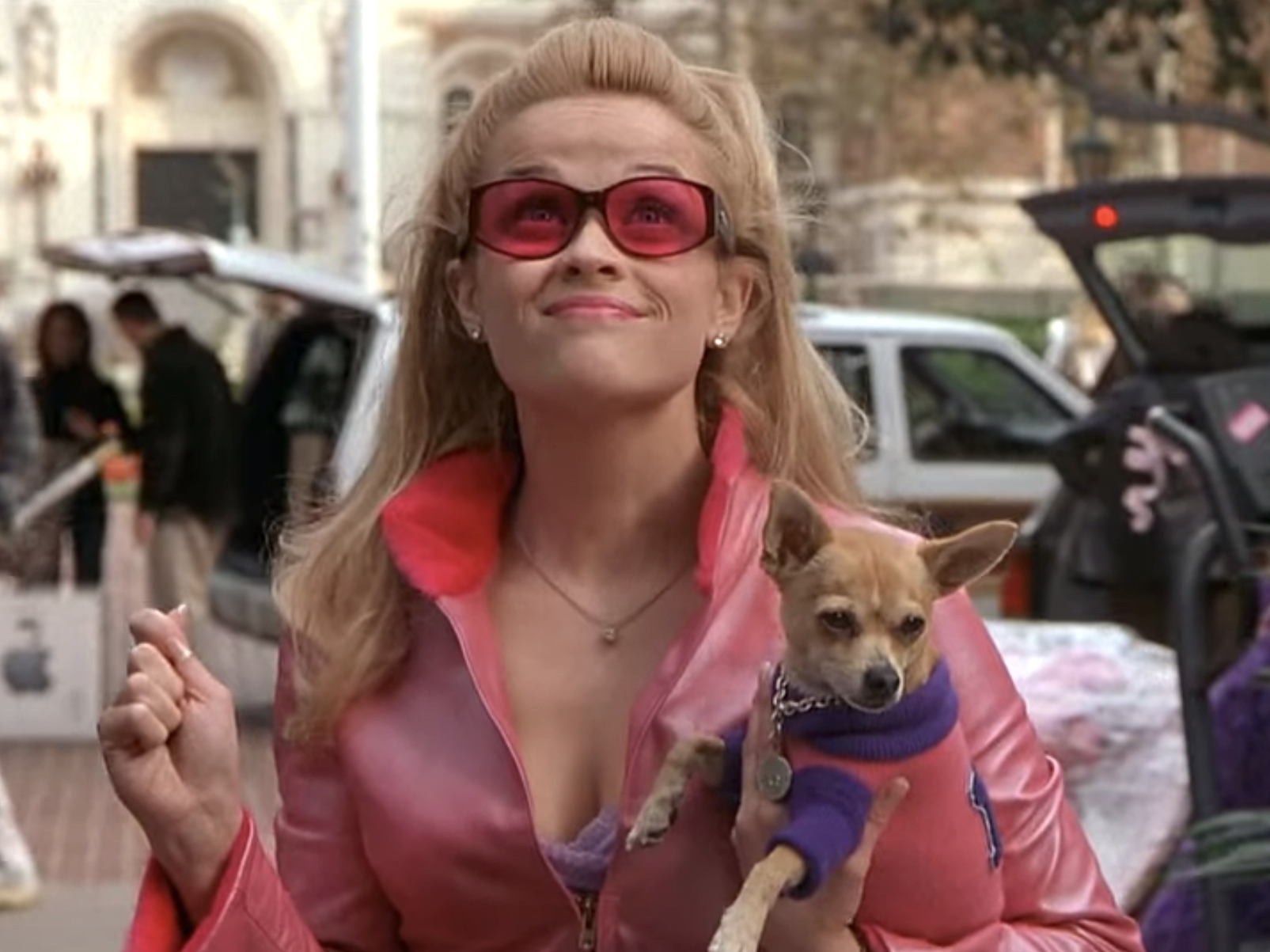
MGM Studios
- "Legally Blonde," released 20 years ago in July, holds up well in regards to its feminist themes.
- But like many films of that time, it falls short on diverse representation.
- The beloved movie's only characters of color are either underdeveloped or straight-up offensive.
- Visit Insider's homepage for more stories.
"Legally Blonde" is filled with valuable lessons.
The beloved film, starring Reese Witherspoon, taught viewers everything from proper perm maintenance and the ideal "bend and snap" technique to embracing feminism and believing in yourself no matter who tries to put you down. It's also, incidentally, a hilarious and endlessly quotable movie.
But as well as it holds up in many regards, particularly when it comes to its feminist themes, the 2001 film isn't perfect.
We need to talk about how poorly it handles its characters of color.
Insider revisited the few non-white characters who appear in the film and spoke to Greg Serano, who played pool-boy Enrique, about his experience playing one of the only characters of color in the iconic movie.
Elle Woods has been praised as a feminist icon, and I wholeheartedly adore her for that
Within minutes of the film's start, Elle is awkwardly dumped by her boyfriend Warner (Matthew Davis) at a crowded restaurant, just as she thinks he's about to propose.
From that moment, she's determined to secure a spot at Harvard Law School alongside Warner so she can win him back - and so begins her feminist journey.
We see Elle find her self worth outside of the man she expected to marry as she becomes a shrewd litigator and realizes that she actually does deeply care about her new vocation.

MGM
While Elle is frequently praised as a feminist icon who fought stereotypes and sexual harassment to prove she is a competent lawyer, Insider's senior entertainment reporter Olivia Singh previously wrote that Elle isn't an obviously likable protagonist.
Elle, who comes from a wealthy family, has a taste for designer labels and fancy cars. But it's hard to look at her and only see her privilege when Elle also brings joy to those around her and is kind to everyone she meets.
She quickly jumps in to defend her new friend, Jennifer Coolidge's Paulette Bonafonté Parcel, in a dog-custody battle with a terrible former partner, and she's fiercely protective of Brooke's alibi in the murder trial (as a fellow thin white woman, Elle is well aware of how bad it would be for fitness icon Brooke's liposuction secret to get out).
"The pretty, wealthy, popular girl is not usually the underdog," screenwriter Karen McCullah told Singh about writing Elle's character. "We flipped it and the humanity of the character because she was so kind to everyone and so optimistic and unfazed."
As impressive as it is that the film's creators made Elle into an unlikely feminist hero, they unfortunately didn't put in as much work (or really any work at all) into its characters of color.

MGM Studios
'Legally Blonde's' diversity issues are cringeworthy in retrospect, but Serano, who played Enrique, told Insider it wasn't 'even a realization'
The movie, as fun as it is, has an extremely white cast. Almost all the characters in Elle's social circles in California and at Harvard are white.
One exception is her friend Serena, played by actress Alanna Ubach, who is of Mexican and Puerto Rican descent and best-known for voicing Mamá Imelda in Pixar's "Coco," though Serena largely disappears in the middle of the movie when Elle is fully immersed into the Harvard Law experience.
The most notable characters of color are one-dimensional: the judge (Francesca P. Roberts) presiding over the film's climactic murder trial and pool-boy Enrique Salvatore (Serano), who is one of the witnesses.
The judge, who's barely in the film at all, has few lines that are mostly reactions to Elle's antics. Enrique, on the other hand, is far more memorable - in part because he's a caricature of a gay Latino man.
During the trial, Enrique claims that he's having an affair with Brooke, implying that the socialite might have murdered her older husband to be with her lover. Minutes later, Elle clicks her Prada heels and proves that the pool boy is gay and has made the whole thing up to make Brooke look guilty.
Before Emmett, tipped off by Elle, proves that Enrique is lying by tricking him into outing himself as gay on the stand (also not great!), the pool boy delivers arguably one of the most recognizable lines from the movie: "Don't stomp your little last season Prada shoes at me, honey."

Metro-Goldwyn-Mayer (MGM)
Other writers, such as Huffington Post's Cole Delbyck, have criticized the film in the past for making Enrique a "blatantly problematic representation of a gay man." But there's also an uncomfortably racist element to Enrique's portrayal as the "sassy Latinx" stereotype.
Enrique wears a sparkly green shirt with a Virgin Mary depicted on the back, speaks with an exaggerated accent, and leaves Cher CDs in the pool house, all before his disturbing public outing.
Despite these issues, Serano, told Insider back in June that he fondly remembers his time filming the movie and playing Enrique.
Serano added that he couldn't recall if the lack of diversity in the film was "even a realization" for him while filming "Legally Blonde" over 20 years ago. After all, he had no idea that he was playing one of only several characters of color with speaking roles.
"As an actor, you're only on set for your scenes," Serano told Insider about his experience. "You really don't know who else is in the film or even the script. You don't know who's being cast for the role."
Serano added that back when "Legally Blonde" was made, representation in films simply "wasn't in the spotlight as much as today."

MGM Studios
Many other iconic movies from the same era as 'Legally Blonde' had predominantly white casts
Certainly, the lack of diversity isn't a "Legally Blonde"-specific problem. Many movies released in the late '90s and early '00s (like "10 Things I Hate About You" and "Freaky Friday") failed to feature a diverse, or even a not-exclusively-white, cast.
While Hollywood has made a far bigger push for diversity in recent years (both onscreen and behind-the-scenes), many of the defining movies of the past few decades missed that boat. It's especially noticeable with "Legally Blonde" because the 2001 movie gets so many other lessons right and was remarkably far ahead of its time in some ways.
But there's still hope for Elle to become a champion of diversity yet.
"Legally Blonde 2," released two years after the first movie, had a slightly more diverse cast. Oscar winner Regina King played Grace, a Congressional aide in Washington, DC, and Elle's workplace-nemesis-turned-ally, as the Harvard graduate tries to pass a bill in the House of Representatives, outlawing animal testing for makeup products.
A third "Legally Blonde" movie, where Witherspoon is set to reprise her role as Elle, is set for May 2022. Mindy Kaling will join Witherspoon as a producer, with the former telling Deadline that the new film will "definitely have a lot of fan favorites" returning.
When asked about what her vision is for the upcoming "Legally Blonde" movie, Witherspoon told The Hollywood Reporter in December 2019 that the new sequel will be "global," while also highlighting "awesome feminist ideas" like the first movie in the series.
"That's my hope and dream for 'Legally Blonde 3,'" Witherspoon said.
Elle ends the first movie by stressing the importance of having faith in other people and in yourself - and I have faith that Witherspoon knows her "global" vision for the upcoming "Legally Blonde" sequel must include better representation and characters of color.
